Amazing nature #17 - The Jaguar
The jaguar animal with several names its scientific name is Panthera once, this is the only big feline that lives in the American continent. It probably extends to the north and southwest of the United States (some still exist in Arizona), Mexico, Central America and the most prominent is South America, where it is the top predator of the tropical forests of the Amazon basin.
The water-loving animal jaguar and the mudflats of Brazil, there capture caimans, anacondas and turtles in the water, dragging them out to dine on a swampy bench or a low branch.
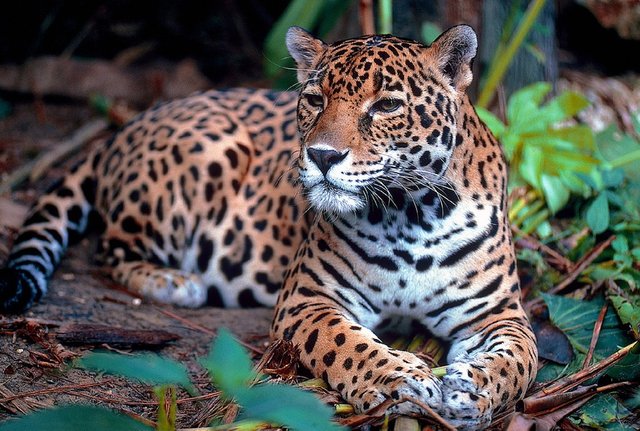
Jaguars are considerably more robust than leopards and have a rounder and much larger skull. This is the big difference between jaguars and leopards; the shape of the head and face is very noticeable.
An adult jaguar can weigh between 46 and 135 kilos and its length is between 1.70 to 2.35 meters from the tip of the nose to the tail. Basically, they have a yellowish-brown coat with irregularly shaped black spots; despite its heavy appearance it is very agile, it can run and swim very fast and at great distances.
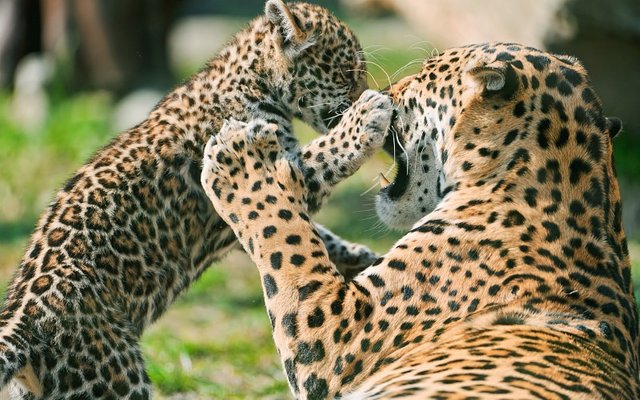
Generally, any one's Panthers have macules in the center of the spots in their layers, which leopards usually do not have, the layers of these species change a lot and truly cannot be reliable in identification.
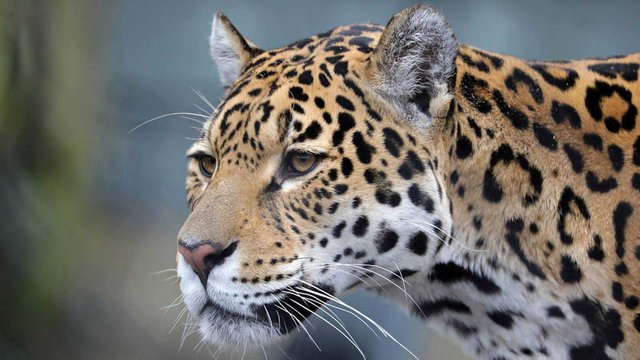
The jaguar was chased for its fur extensively in the last century, the jaguar coat was one of the most desirable of any and every fur in the world. Tens of thousands of jaguars were captured and killed by the fur industry until the 1990s when the first conservation efforts began.
Today, jaguars are not often captured for their skin, they usually die at the hands of local peasants and labradors. The concern of these peasants is for their livestock, and not necessarily for their safety, since, despite their size and the power they possess in killing, the jaguar rarely attacks human beings.
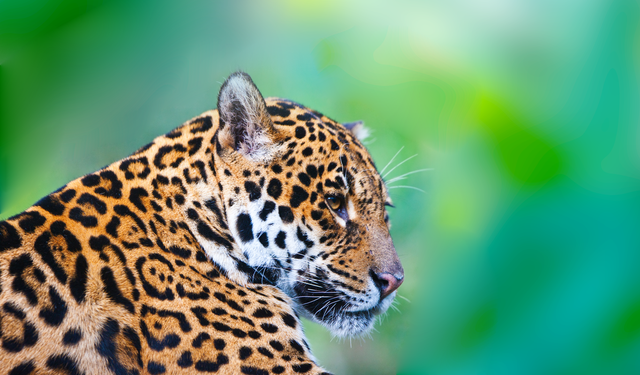
The jaguar is one of the least likely of all the big cats to attack a human and is the one who handles far fewer attacks reported on people - fatal or other methods, than its American cousin considerably smaller than the mountain lion.
The surprising animal jaguar, main features
The jaguar is the third largest feline, the tiger and the lion are the only larger. They have a body length of between 1.1 and 1.9 m, a tail length of between 45 and 75 cm, a shoulder height of between 55 and 76 cm and weigh between 36 and 160 kg.
Females are typically 20% smaller than males and generally vary in size according to their distribution, they tend to increase in size from north to south.
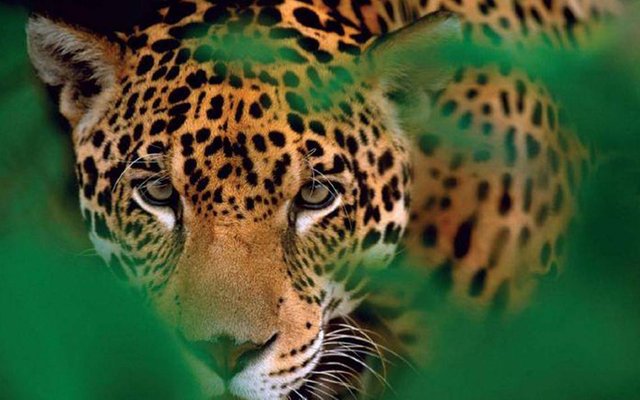
The animal jaguar is compact and muscular. It has short and robust limbs, which allows it to be an expert in climbing, swimming, and squatting. It has a strong head and a very powerful jaw.
The base layer of the jaguar is reddish, or maybe reddish/brown, and has irregularly shaped rosette markings on its body. These markings become solid spots on the head and neck, and they fuse to form rings on your tail. The bottom of the Jaguar is lighter in color.
Melanic or black jaguars are much less common than the spotted form. They are known as Panthers (as are black leopards). They appear to be completely black, but their markings can be seen if closely examined.
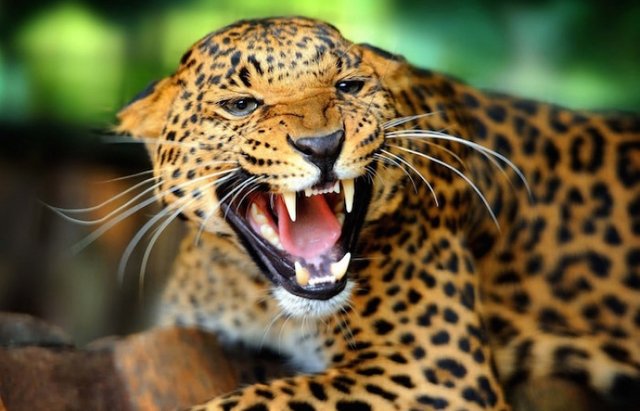
Darker colored animals tend to be found in dense forest areas as this helps them stay hidden and lighter colored, larger animals tend to be found on open plains.
What the Jaguar Eats
The Jaguar consumes almost any type of animal. In nature, it feeds on deer, peccaries, sloths, wild boars, capybaras, large rodents, snakes, caimans, tapirs, fish, and smaller animals. They also consume sheep, armadillos, turtles, crocodiles, and cattle. The jaguar is a skillful hunter who looks for his food on land, water, and trees. The practiced jaguars consume most of the same points. The food has vitamins, which is very important for them. Jaguars kill animals in a special environment. They attack from the back of the head, as opposed to a typical bite on the neck.
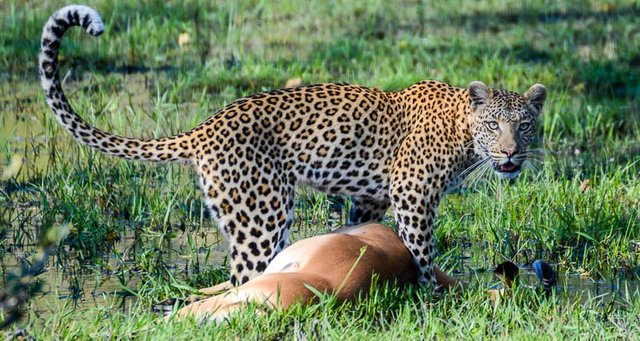
The Jaguars are effective hunters. The very effective jaw muscle mass has actually allowed the once panther to establish a very rare elimination technique. The Jaguars are effective and go crazy for a large piece of meat, while others attack their prey in the neck, the Jaguars do not use this strategy when sailing. Rather they strike by biting the back of the head of the prey and piercing the thoughts with their canine. It will be understood that they have the largest jaws among the felines.
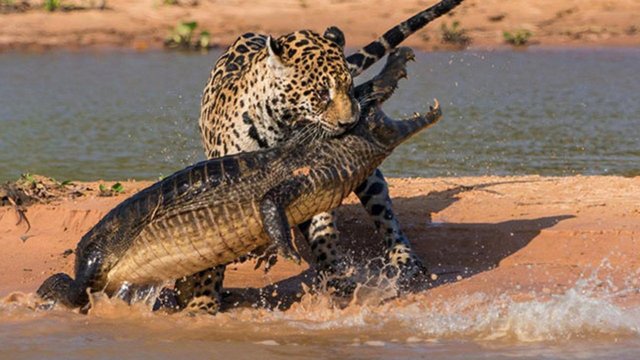
Where the Jaguar or Yaguerete lives
The jaguar is found on the American continent; they live in Texas, in the mountains of Colorado Cerro in Arizona, southern California, and New Mexico, in the United States, and are found in the rainforests of Central and South America. There is the largest known population in the Amazon rainforests. Black jaguars live in South America. The jaguar is also found in Africa and Asia. Until the 1900s, they also toured the Yukon, southern United States in Uruguay and Iceland.

The jaguar is found on the American continent; they live in Texas, in the mountains of Colorado Cerro in Arizona, southern California, and New Mexico, in the United States, and are found in the rainforests of Central and South America. There is the largest known population in the Amazon rainforests. Black jaguars live in South America. The jaguar is also found in Africa and Asia. Until the 1900s, they also toured the Yukon, southern United States in Uruguay and Iceland.
Thank you for reading 😊


If you liked reading this article, feel free to FOLLOW ME, UPVOTE and RESTEEM! It's always appreciated =D. Thank you all for your support and see you soon for the news flamingirl's adventures!


What a fierce, powerful, but graceful creature
Yes 🤩🤩🤩
Jaguars are truly beautiful creatures. Their spots are amazing..
Thanks for sharing a very informative post about them. I have learned something new about them today..
How have you been pretty gurl??
Cheers!
Posted using Partiko Android
Nice to read you!!! 🤗
I'm good and you???
Thank you so much for your nice comment my friend 😍
Have a nice weekend 😘
Never better!! 😉
Have a blast weekend too..
Posted using Partiko Android
Loved this post! Wild cats are just a amazing; I'm travelling at the moment, and one of the nature parks here has the biggest concentration of leopards in the world... unfortunately I wasn't lucky enough to see one! If I can just make a tiny correction, there's a misspell in the scientific name: it's Panthera onca. ☺
Posted using Partiko Android
Thank you so much for your nice comment and your correction my friend!!! Where are you travelling???
Have a nice weekend 😊
Sri Lanka! This country is amazing... but unfortunately only a few hours until I start the journey back home. Can't wait to see all.the photos in a big screen! 😉
Posted using Partiko Android
Lucky you! I hope, your travel was ok and your photos was good! I can't wait to see some of it 😉
It was awesome, thank you! And yes, you will surely see a few posts about Sri Lanka and its fauna in the near future! ;)
Hello, that beautiful jaguars, photographs beautifully. Greetings.
Really, they are beautiful creatures, thanks for the nice educative post.
You're welcome my friend! 😉